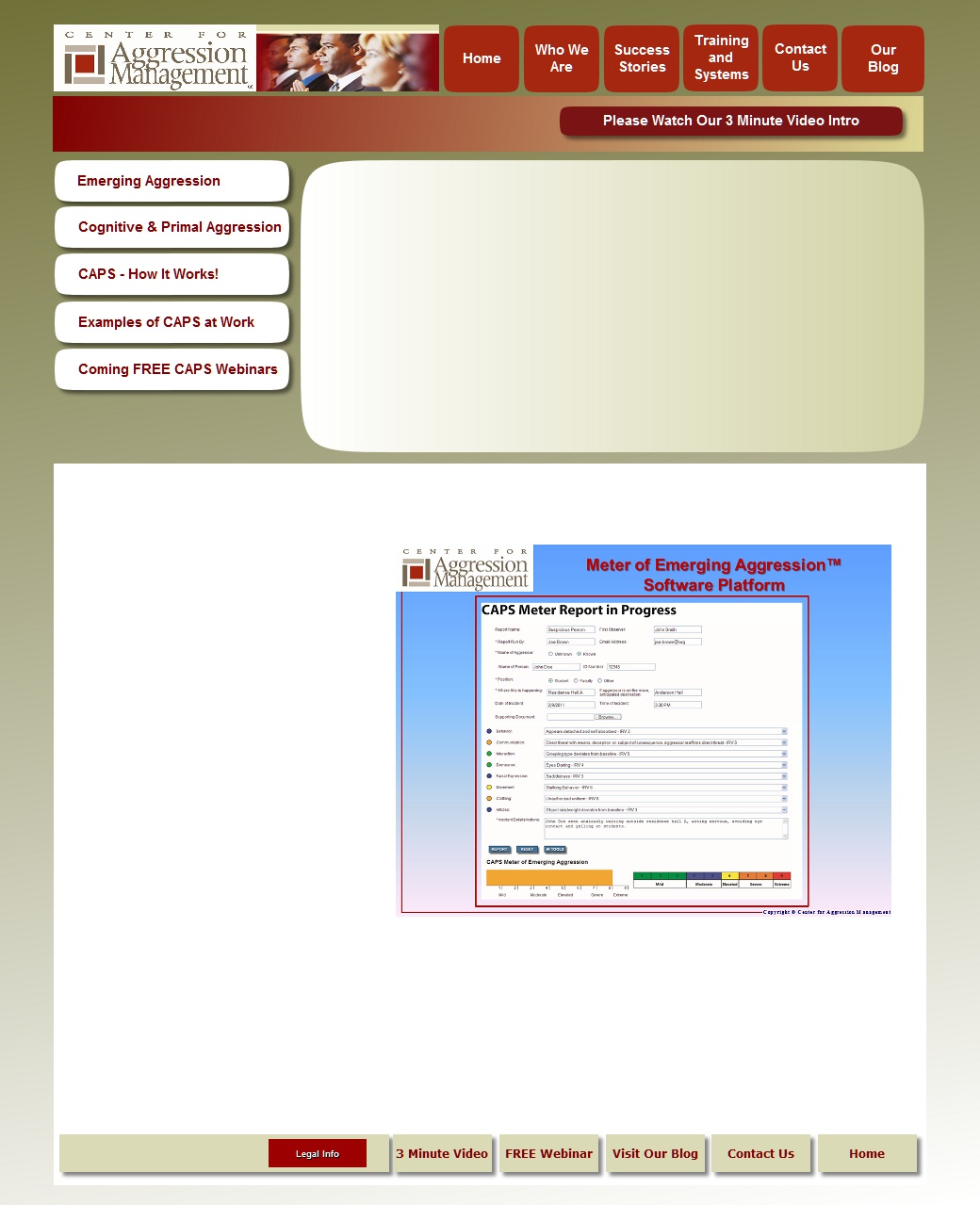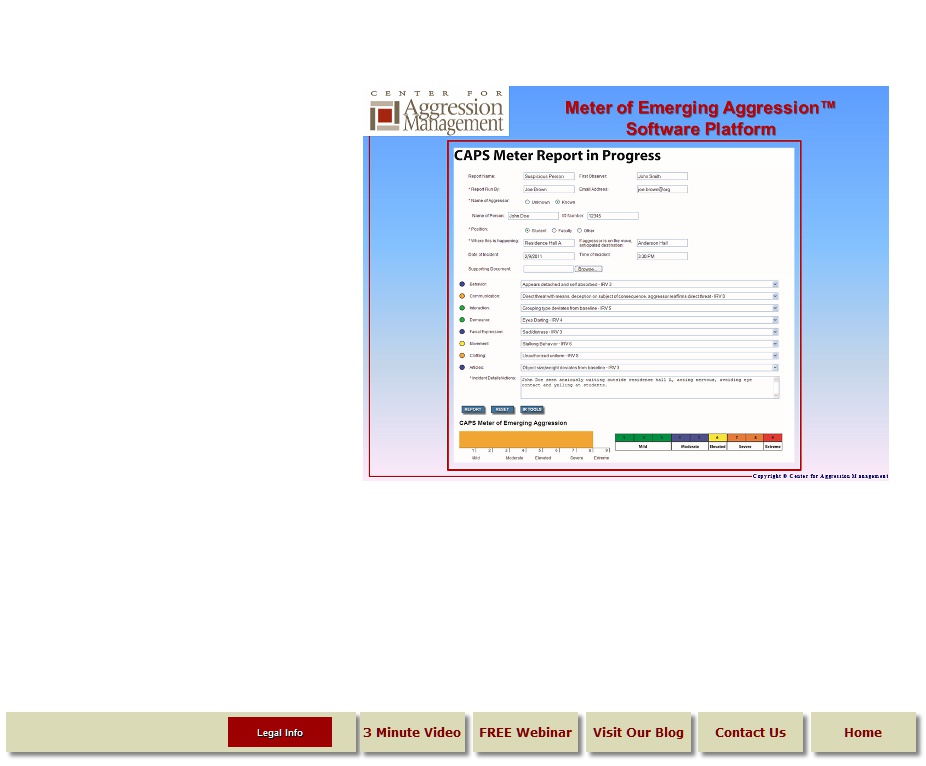|
|






An individual is walking across the campus of a
large state university.
A member of the Aggression First Observers team - and there are many on campus – witnesses the person exhibiting “objective and measurable” indicators the observer has been trained indicate a potential aggressor.
The observer immediately relays this information by cell phone to an on-duty Aggression Manager.
The report includes information using standardized terminology in 8 areas: Behavior, Communication, Interaction, Demeanor, Facial Expression, Movement, Clothing and Articles.
These objective observables are recorded in the Meter of Emerging Aggression Web-based Platform in a special input area that also provides an assessment of the stage of aggression and therefore the risk involved.
As the report is entered email notifications automatically are sent by the MEA Web-based Platform to predetermined memebers of the response team.
One or more Aggression Managers evaluate the level of hostile intent and decide on an action plan.
For guidance, the Aggression Managers refer to the latest policies and procedures stored in the awareness vault included in the Platform. Among the options available to them would be asking the Aggression First Observer for more information all the way to arrest if the concerns rise to law enforcement’s threshold of “probable cause”.
A member of the Aggression First Observers team - and there are many on campus – witnesses the person exhibiting “objective and measurable” indicators the observer has been trained indicate a potential aggressor.
The observer immediately relays this information by cell phone to an on-duty Aggression Manager.
The report includes information using standardized terminology in 8 areas: Behavior, Communication, Interaction, Demeanor, Facial Expression, Movement, Clothing and Articles.
These objective observables are recorded in the Meter of Emerging Aggression Web-based Platform in a special input area that also provides an assessment of the stage of aggression and therefore the risk involved.
As the report is entered email notifications automatically are sent by the MEA Web-based Platform to predetermined memebers of the response team.
One or more Aggression Managers evaluate the level of hostile intent and decide on an action plan.
For guidance, the Aggression Managers refer to the latest policies and procedures stored in the awareness vault included in the Platform. Among the options available to them would be asking the Aggression First Observer for more information all the way to arrest if the concerns rise to law enforcement’s threshold of “probable cause”.
Copyright 2012, All Rights Reserved,
Center for Aggression Management
Center for Aggression Management
Training and Systems that Prevent Violence
CAPS at Work in a Campus Setting!
An Illustration of CAPS at Work
After the initial response has been implemented and more is known, a plan is
entered into the MEA Web-based Platform and appropriate Aggression
Managers receive follow-up reminders over the next 6 months as they monitor
the status of the aggressor's situation.
The Aggression Managers then continue to use the MEA Web-based Platform to record subsequent observations and interventions with the aggressor and to track over time the process of managing the aggressor.
The Aggression Managers then continue to use the MEA Web-based Platform to record subsequent observations and interventions with the aggressor and to track over time the process of managing the aggressor.
The following example will help you understand how the CAPS system would be used in a day-to-day
situation. Notice the following:
• The Aggresssion First Observer feels comfortable reporting, uses pre-determined, objective
observables, and knows his report can be understood and acted upon.
• The Aggression Manager has useful information on which to base a response and can document the observations and responses in an objective, consistent manner. Policies and procedures are right at hand for reference.
• The MEA Web-based Platform organizes and helps assess reports, makes notifications, and continues to serve that role over time as the Aggression Managers track the situation of the aggressor.
• Safety and the potential aggressor are served through an early observation and response.
• The Aggression Manager has useful information on which to base a response and can document the observations and responses in an objective, consistent manner. Policies and procedures are right at hand for reference.
• The MEA Web-based Platform organizes and helps assess reports, makes notifications, and continues to serve that role over time as the Aggression Managers track the situation of the aggressor.
• Safety and the potential aggressor are served through an early observation and response.


















